2 - On Virtual Pets (part 1 of 2)
Hi Friends,
Sorry for this post being late, I didn't have much to talk about at the beginning of this month. I'm going to try and keep at least one post a month, and then eventually having bi-monthly posts on the 1st and 15th once I start really crunching on this project.
My trip to Japan has partially been to get a lot of references/inspiration for my game from all the toy and electronic stores here, but also to work on my game part-time. I don't have anything really new or exciting to show this time, so instead I'm creating a two part post about Virtual Pets. For part one, I will be breaking down the core gameplay of Tamagotchi-like virtual pet games and analyzing what makes them fun and interesting (and not). In the next part I'll be talking about how I want my game to add depth to existing virtual pet mechanics as well as adding whole new elements not seen in previous virtual pet games.
Breaking Down the Tamagotchi Gameplay
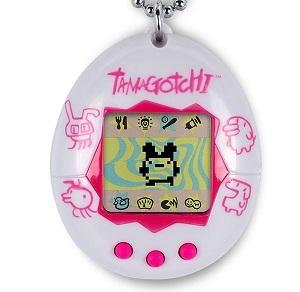
There has been many virtual pet games in the past, all of which have had a lot of different elements and quirks. Digimon allowed players to connect devices to fight, the Chao in Sonic Adventure 2 could evolve in a nearly-infinite amount of ways, and Nintendogs allowed players to interact with their pets using the Nintendo DS stylus (for a small crash-course in the history of virtual pets, check out The Evolution of Virtual Pets). At it's core, I wanted Nano Pet to be based on the core elements of Tamagotchi. This was a game I grew up with and have the most knowledge of. Therefore, my first task I have myself on Nano Pets was to create a basic, minimal virtual pet game. But what does that mean? What does that game look like?
First, let's break down the core game loop of a Tamagotchi game:
- Fulfill your pet's physiological needs, which increases over time
- Hunger -> Feed pet
- Hygiene -> Clean pet waste
- Sleep -> Turn off lights when pet is sleeping
- Happy -> Either Play with pet or Feed pet a snack
- If you fail to fulfill your pet's physiological needs, events may occur that requires extra attention:
- Pet isn't cleaned -> Pet becomes sick -> Administer medicine to cure pet's illness
- Pet isn't played with -> Pet is not happy and becomes rebellious -> Pet doesn't eat, even when hungry -> Pet needs to be disciplined
- Pet is fed too many snacks -> Pet is happy, but spoiled and becomes rebellious -> Pet needs to be disciplined
- If you take good care of you pet, they will evolve into "more desirable" pets
- If you neglect your pet, or don't raise them well, they will either evolve into "less desirable" pets or die early
- All pets eventually die and are replaced with a new egg
There are some smaller details between what I described above (for instance, your pet might need disciplining even if all their needs are fulfilled), but at it's core this is the moment-to-moment engagement with a virtual pet game. None of the gameplay requires any high-level dexterity or problem-solving skills, it just requires you to be attentive and present. Tamagotchis made a noise when they needed attention, but the best way to raise your pet required you to check the status of your pet periodically. The low frequency of gameplay and a low skill requirement made it so this game could be play at all hours of the day. Even when you weren't actively engaged with your tamagotchi, it was still running and active (more on this later).
OK great, but were Tamagotchis actually fun? Were they interesting? If you asked me in elementary school, my answer would have been a big YES, but now my honest answer is Kinda? I think there's a good reason Virtual Pet games have fallen on the wayside over the past decade or two, but I also strongly believe this genre is full of potential in the modern era of video games that hasn't been realized yet.
Raise Your Pet... So It Can Fight?
In the last section I talked about what was involved in playing with your Tamagotchi, however it's only fair to talk about the non-gameplay elements that made Tamagotchis appealing:
- Being a standalone device, you could argue that Tamagotchi was released more of a Toy than a Video Game
- Not to mention that for the time, Tamagotchi was fairly advanced compared to other Toys (and even a lot o Video Games)
- Tamagotchis were very aesthetically cute and could've been considered a 'fad' by any standard
- The device was small enough that it wasn't a burden to carry around
However, these were all true in the 1990's. In today's high-tech world, these elements don't exactly hold up. Not too long ago, I tried replaying an old Tamagotchi device. I carried it around and played with it periodically, and even though it was neat and nostalgic for a bit, I started doing the bare minimum to take care of my pet until I stopped taking care of it altogether. I simply lost interest in my Tamagotchi for several reasons:
- There wasn't much reward for keeping my pet alive except that my pet didn't die
- The consequences for neglecting my pet are very small, so I didn't have a big incentive to be too involved with my pet
- The 50-50 guessing minigame you play with your pet just sucks
- There was nothing new or interesting to expect from my pet except for it to die
I understand that all of those things are most likely due to the technical limit of a Tamagotchi device rather than any shortcomings of the original creators, and the more modern Tamagotchi models in Japan show this is true. It also makes sense why newer virtual pets made players focus on different elements like fighting or breeding while raising/caring for your pet become a secondary task.
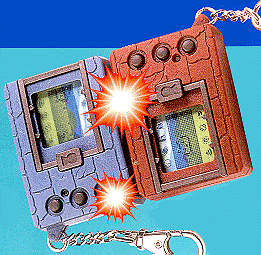
Not only that, but today everyone carried a smart phone: a much more advanced device with a multitude of different applications that's nearly impossible for old Tamagotchis to compete with for attention. For this reason, all new virtual pets are most likely going to exist as a smart phone or computer application and old standalone virtual pet devices will fall away into obscurity (with exception of new Tamagotchi devices that have a rapidly-shrinking market). I think there an interesting aspect to having your pet as a physically-separate device, but for many reasons it's a lot more practical to make a virtual pet game for phones and computers. Even Bandai has moved away from physical devices in favor of mobile applications.
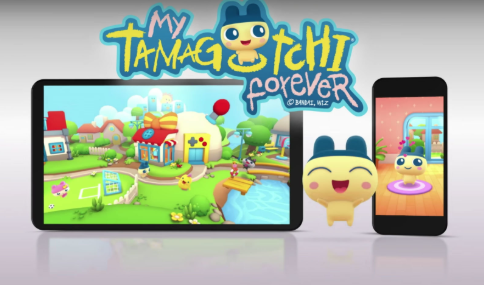
What does this say for virtual pets as a genre? I think the biggest takeaway is that unlike other older genres of games like platformers and shooters, virtual pet games have never had their core mechanics iterated on. With small exceptions, all new virtual pet games have more-or-less thrown away the aspect of actually raising and caring for your pet in favor of something more immediately exciting. In these games, raising a pet is a means to an end rather than the end itself: Raising a pet well so they can be a better fighter, or raising a pet so they can have an interesting evolution. The Chao minigame in Sonic Adventure 2 doesn't even require any actual caring for your chao but rather having you find artifacts for your chao to evolve a certain way.
The stagnation of this genre means that we don't have many games about caring for a pet. This is immediately noticeable when you play most of the popular virtual pet games for mobile devices. Today, mobile games that try to solely focus on pet-raising are.... mostly bad.
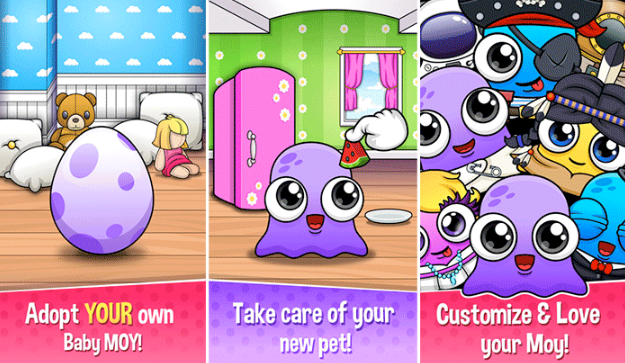
Many of the newer virtual pet games for mobile aren't fun or interesting for similar reasons that Tamagotchis aren't anymore: The mechanics around raising your pet are very simplistic with very little rewards or consequences. Even worse, many of these games tack on microtransactions where you can pay money if you want the boring task of pushing a "feed" or "clean" button to be automated in some way. The biggest rewards you can hope for in these games are usually some sort of customization mechanic, where you can see your small pet in a hat (and if you want the hat badly enough, you can probably pay money for it). Also, a small aside but something I think is really important, but most of these games are really aesthetically unpleasant and unoriginal.
There are exceptions of course. I think Pakka Pets for iOS/Mobile had great art, music, and interesting things to do on top of being a virtual pet game. The part of raising a pet is still secondary to other parts of the game (quests, town-raising), but at least those parts are interesting and thematically overlapped enough with the pet-raising that it's still a very engaging game. I should probably note here that a virtual pet not focus on raising a pet isn't necessarily a bad thing. I just want to illustrate how the original core mechanics of Tamagotchi haven't really been iterated on, and the most popular solution is to build more compelling systems and mechanics and make the part where you take of a pet secondary.
What are the Other Genres Doing?
After that last section you're probably thinking "OK James, so you're going to revolutionize Virtual Pets? You think you can bring back the Tamagotchi?" Short answer: I hope so. Long answer: I have some ideas for making the part where you raise your pet more engaging. but there are elements from newer games and genres that I think we can utilize to give more meaning in the virtual pet genre.
Idle/Incremental Games
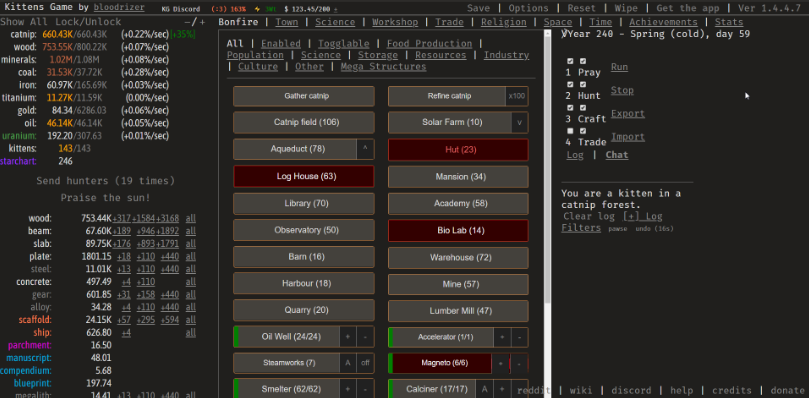
This is a genre I've only been moderately interested in, but I see a huge potential in these games for virtual pets. First off, these games usually run 24/7 and require players to check in on them periodically. Sound familiar? The only difference here is that idle games usually showing numbers going up (resource accumulation) instead of going down for virtual pet games (the pet's physiological state). It's fun to come back to an idle game and see your numbers go up. It's not very fun to come back to your virtual pet and see them hungry/sick.
I'm not suggesting that your pet needs to somehow grow at an infinite scale, but the idea of coming back after a while to see something in the game improve rather than depreciate would give players incentive to keep coming back to play. I'm not totally sure how this would be introduced in a virtual pet game, but I would imagine a balance both positive and negative things that could happen in the game when you return after a duration of time.
Simulation Games (Animal Crossing, Stardew Valley, etc)

These games are full of activities that revolve around non-combat, non-competitive goals. Animal Crossing in particular has always been especially interesting to me. The moment-to-moment activities in Animal Crossing are relatively easy and passive, but when combined with the real-time clock and constant iteration on events, town activities, new villagers, etc, these activities feed into a greater and meaningful long-term experience. Virtual pets have easy and passive moment-to-moment activities, but without the interesting new events and long-term goals, these interactions with your virtual pet don't provide much fulfillment.
What is a Virtual Pet but a Pet Simulation game? I think if looked at in contrast with other simulation games, Virtual Pet games have a ton of potential for growth and interesting aspects that can all be integral to the actual "Raising A Pet" part of the Pet Simulation game. Games like Stardew Valley is a Farming Simulator, but there are so many interesting things in the game that revolve around farming that the actual digging/planting/watering part of farming aren't criticized as mundane or repetitive tasks but rather building blocks that ultimate build on a wonderful "Farming" experience full of engagement and purpose.
Papers, Please

OK this might sound like weird example, but I believe there are a lot of elements in this game that can be utilized in a virtual pet game. Something that is often overlooked in this game is that your work directly influences the health and well-being of your family. You are penalized for making mistakes, which means you make less money and aren't able to provide the necessities for your family. Given your authoritative position over immigrants passing through the border, this creates a lot of interesting and engaging scenarios: A woman with an invalid passport begs you to let her into Arstotzka less she faces certain death in her home country, but if you approve her entry it means your son might not get the medicine he needs to survive.
I don't think you need to have a border guard simulation to create these kinds of meaningful decisions. I believe the passive nature of virtual pet games could benefit from having these kind of meaningful choice-making. The consequences for failing to care for your pet are extremely low, but what would a virtual pet game look like if your decisions actually mattered?
Part One Conclusion
I hate to do the "I rEMemBer mY fIrSt ViDeO gAmE" bit, but I have a very distinct memory of getting my first Tamagotchi that I'll never forget: It was 2 days after my birthday, and my mom took me to the San Francisco Exploratorium with her friend from work. Her friend was holding a tamagotchi box and I asked her "Is that a Tamagotchi?" and she said "Oh yeah it is. Happy birthday" and she just handed it to me. I was completely obsessed and played with it nonstop until I left it in my pants pocket one day and it went through the washing machine. I cried so much that my mom bought me a new Tamagotchi for Christmas.
I have a really fond memory of my Tamagotchi, and I still think the core of what Tamagotchi meant to me back then was very powerful. We live in a new world now, and Tamagotchi in their original form are now pretty obsolete. The genre hasn't seen a lot of innovation, but I still think there's something at the core of virtual pet games that are magical. I want to try and re-capture that magic, while also making a game that I would find fun, engaging, and meaningful in my adult life.
In the next part, I'll talk more about how I want Nano Pet to improve on some of the flaws that I raised in this post. If you thought this was interesting or think I'm 100% wrong and an idiot, please leave a comment letting me know. Thanks!
NanoPets
A virtual pet game for PC and Mobile
| Status | In development |
| Author | Jamsf |
| Genre | Simulation |
| Tags | Cute, Life Simulation, Management, passive, Unity, Virtual Pet |
More posts
- 5 - New UI DesignJun 16, 2020
- Update - sorry been busyMar 07, 2020
- 4 - Artificial Intelligence Progress in NanoPetsAug 05, 2019
- 3 - Japan Trip PostmortemJun 11, 2019
- 1 - First Post!Mar 13, 2019

Leave a comment
Log in with itch.io to leave a comment.